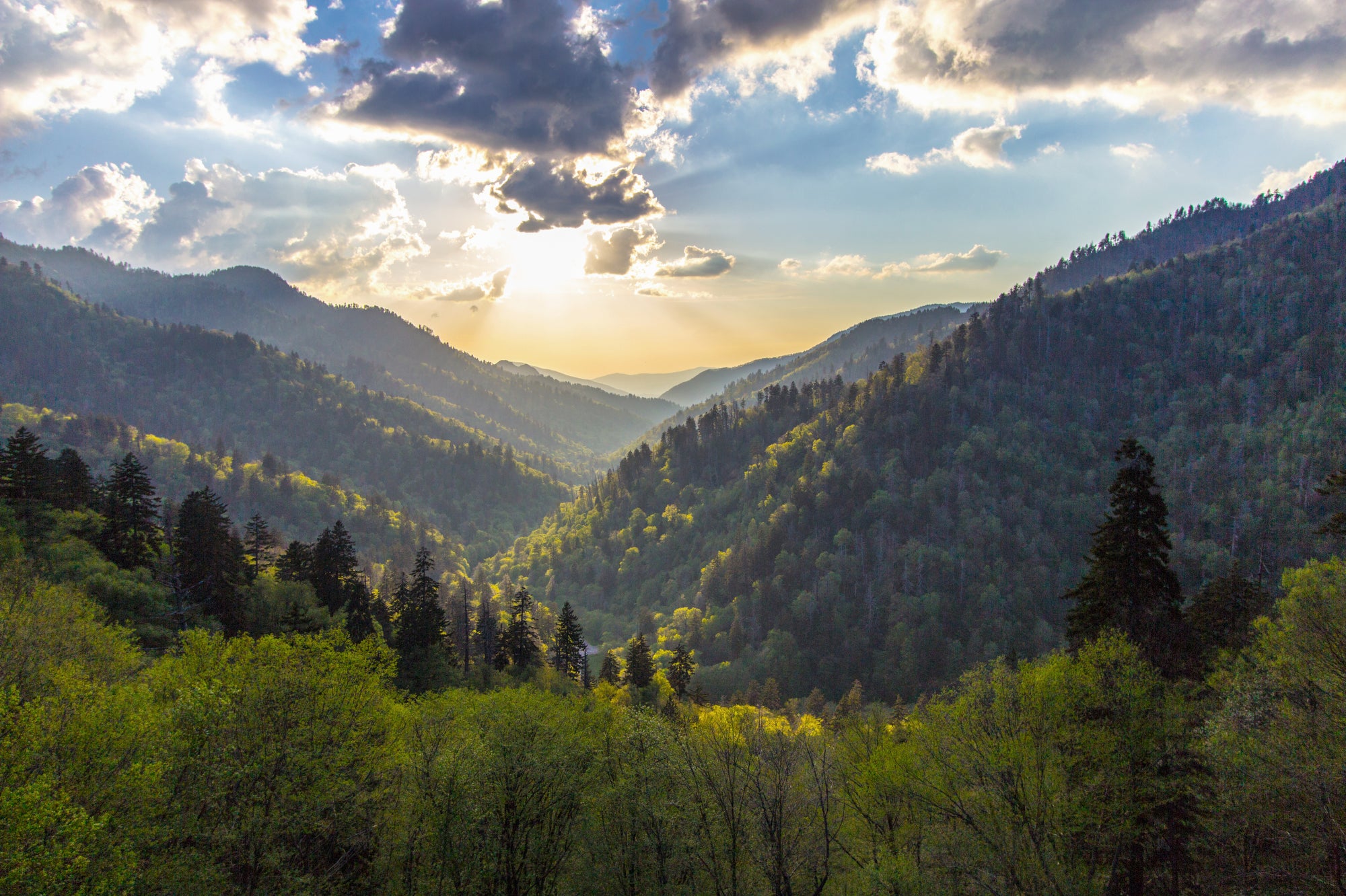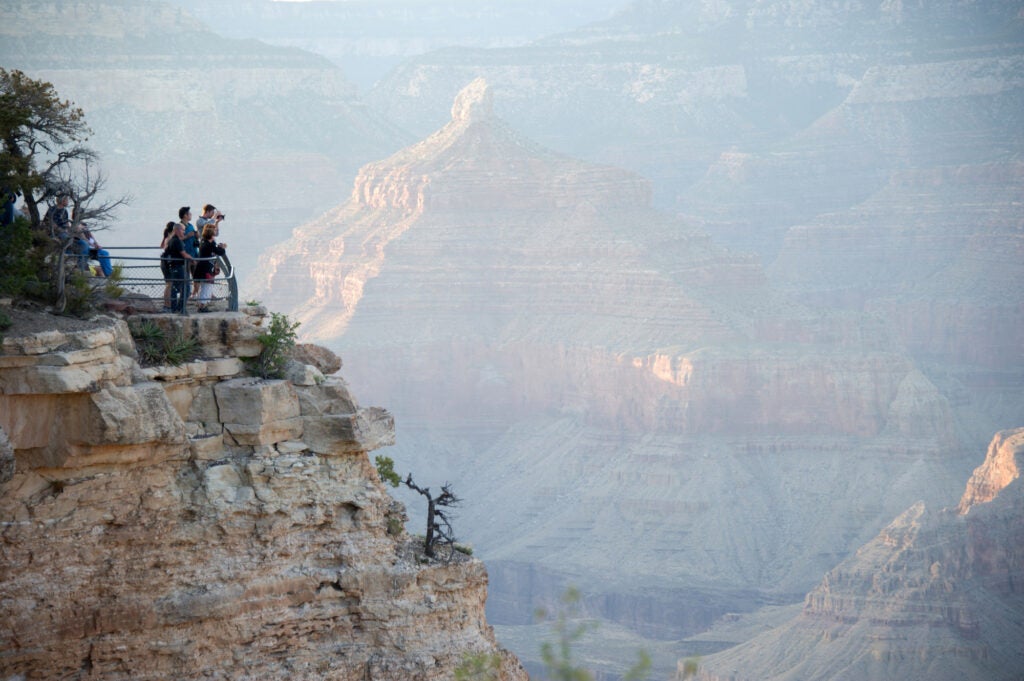New Victory Will Bring Clearer Views and Cleaner Air to National Parks
The government is acting on plans to reduce haze pollution from burning fossil fuels near national parks in 32 states.

This page was published a year ago. Find the latest on Earthjustice’s work.
On a clear day, visitors to Smoky Mountain National Park can see the incredible view pictured above.
Yet thanks to dirty air pollution from nearby facilities that burn fossil fuels, visitors may get this haze-smeared view instead:

Visitors to the Great Smoky Mountains National Park try to look through the haze as they stand at an overlook at Look Rock near Townsend, Tennessee, in 2006. The most frequently visited park in the nation and within a day’s drive for two-thirds of all Americans, the park has air quality similar to that of Los Angeles. (Chuck Burton / AP)
Now, in response to legal action by Earthjustice and conservation groups, the government is acting to reduce haze pollution in national parks, bringing cleaner air to iconic wilderness areas and their surrounding communities. As part of the settlement, the Environmental Protection Agency (EPA) agreed to take long-overdue action on 32 states’ plans to reduce haze pollution.
Here’s what to know:

Tourists observing the Grand Canyon during a hazy day. (Edwin Remsburg / VW Pics via Getty Images)

Tourists visit Grand Canyon National Park in Arizona on a clear day. (Ziga Plahutar / Getty Images)
Impacts of haze pollution:
Haze from burning fossil fuels and other sources is a major concern for 98% of national parks in the United States.
Haze doesn’t just prevent visibility: those same air pollutants also harm the health of people breathing it in, particularly in communities experiencing targeted, systemic racism from polluting industries. Studies have linked long-term haze exposure to respiratory issues and cardiovascular disease. Air pollution from burning fossil fuels and other sources also harms nature and sensitive ecosystems on public lands.
How we’re fighting for clearer skies:
Over two decades ago, the Environmental Protection Agency created a rule under the Clean Air Act that requires states to submit plans for eliminating haze pollution in national parks, mainly from coal-fired power plants and industrial sources.
Yet the EPA failed to follow up on those plans in over 30 states — so we took them to court.
In June 2023, Sierra Club and the National Parks Conservation Association, represented by Earthjustice and Sierra Club’s Environmental Law Program, filed a lawsuit against the agency for failing to approve or reject the states’ plans. This week’s order is in response to that lawsuit, and establishes a timeline for the EPA to approve, deny, or partially approve the outstanding state plans to eradicate haze pollution within two years.
This interactive dashboard shows where the EPA will take action on Regional Haze plans, and which coal plants contribute the most haze pollution. The states are: Kansas, New York, Connecticut, New Hampshire, Delaware, Wisconsin, Georgia, North Carolina, Utah, Wyoming, West Virginia, Arizona, Ohio, Idaho, Michigan, Texas, California, Florida, Oregon, Colorado, Montana, South Carolina, South Dakota, Tennessee, North Dakota, Indiana, Washington, Hawaiʻi, Nevada, Alaska, Arkansas, and Oklahoma.

A hazy sunset over the Teton Mountain Range in Grand Teton National Park, Wyoming. (Jon G. Fuller / VWPics / Universal Images Group via Getty Images)

The Grand Teton mountain range on a clear day. (Ed Freeman / Getty Images)
“The EPA is finally acting on the Clean Air Act’s mandate to get states to eliminate haze pollution in national parks and wilderness areas. This is not just about iconic American views, but also protecting downwind communities from dangerous pollution. Now the EPA must ensure that the state plans significantly cut air pollution, as the law requires,” said Charles McPhedran, senior attorney with Earthjustice, which represented Sierra Club and NPCA.
Earthjustice and our clients will ensure that states and the EPA meet these deadlines and take action to finally control air pollution from coal-fired power plants and other major industrial polluters.
Earthjustice’s Clean Energy Program uses the power of the law and the strength of partnership to accelerate the transition to 100% clean energy.